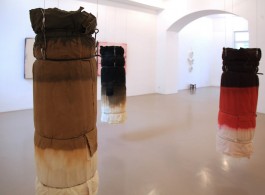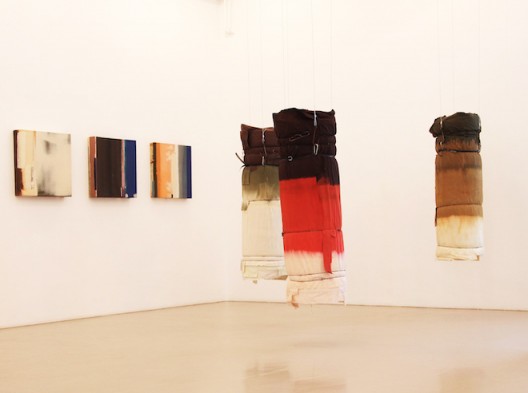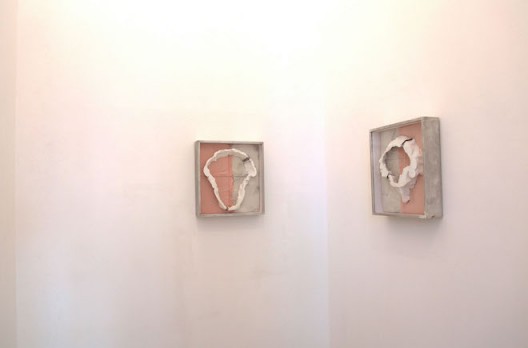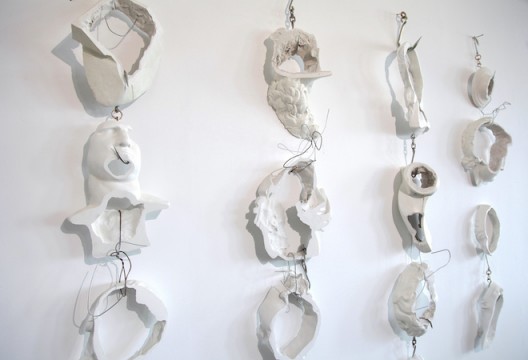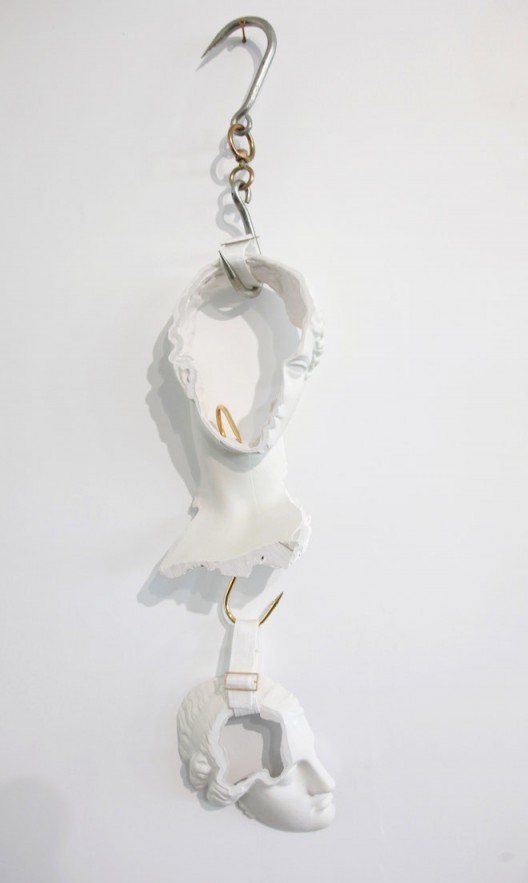Thomas Rehbein Galerie
Cologne
刘广云个展《Liu Guangyun》在德国科隆Thomas Rehbein Galerie 画廊展出 Cologne。
展期:2019年11月22日至2020年1月11日
The French term Couleur, literally translated as “color”, refers figuratively to the imprint of a human being regarding its spiritual-ideological attitude. It is a figure of speech expressing that someone “belongs to a special breed of people” or is equipped with a distinctive temper or individual posture. Correspondingly, the adjective “colored” or “hued” on a metaphorical level refers to diverse shades in the range of subjective attributes.
In his work group Original Color (2016 – 2019), which consists of canvas pieces and expansive sculptural arrangements, Liu Guangyun decolorizes various garments and fabrics by using a bleaching agent. The color removal is intended to restore the original tone of the untreated textile material.
The color gradations of the fabrics in Liu Guangyun’s works reveal different stages within the bleaching process. Faded, pale parts contrast with areas of bright, rich color. Since the discoloration proceeds unevenly, slight traces of color remain. In addition to the works in which a single length of fabric or many smaller pieces cover a stretcher, Liu creates sculptural works in which the process becomes immediately tangible. Here, Liu dips large bales of material into containers containing bleach, so that this slowly seeps through layers of the fabric; the continuous loss of color leading to painterly progressions and soft transitions.
Liu Guangyun eliminates the specific color, which, as a characteristic property of the fabric has been subsequently added to enhance the plain material. As the extinguishing brightness of the bleach spreads, the variety of individual nuances vanishes, the paleness of pure materiality emerging instead. Liberated from their distinctive color, all fabrics appear equally neutralized at the end of this treatment. Their appearance is unified by the consistent loss of color.
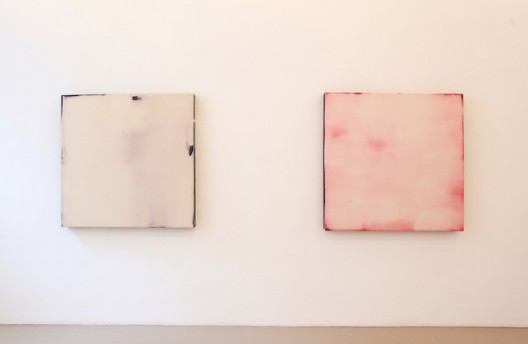
In the slow fading of color the textiles assume a former state. The process of bleaching traces the way back from the present to the past, visualizing the return of an original condition. At the same time, the appearance of nothingness also marks a new beginning, the purity of a blank sheet, Tabula Rasa.
In particular, the symbolic impact of these works, which become legible in the context of identity formation and cultural influence, unfolds primarily in front of the biographical background of Liu Guangyun. Liu was born in China in 1962 and raised there. Since the early nineties, he commutes between the People’s Republic and Germany – where he lives with his wife and child – and is equally influenced by Western and Eastern culture. His affiliation remains ambiguous, as a traveler between the worlds he experiences both presence and absence, foreignness and familiarity, closeness and distance. At times, this ambiguous relationship to his respective center of life enables him to critically engage with the customs and traditions of the two very different countries.
During his artistic formation in China, Guangyun experiences the government-imposed orientation towards Western cultural ideals. At the art academies, students’ drawing skills are developed and evaluated by means of the exact representation of classical European Renaissance sculptures. For the series Portraits (2019), Liu Guangyun uses a saw to accurately
cut gypsum models of prominent Western sculptures into evenly thin slices, which, like chain links, are interconnected by wire or meat hooks and hung up as a strand. The ideal form of a Venus, an Apollo, or even the perfect statue “David” by Michelangelo, is broken down into segments with clean cut edges and irregular outlines. Although the perfect figure in its much invoked unity is destroyed and the presentation of the single parts may appear brutal, the process of separation does not correspond to a violent shattering, but rather constitutes a systematic fragmentation, almost a meticulous dissection. Liu Guangyun shows the rough, unprocessed interior of the hollow form as well as the smooth, even exterior. The difference between inside and outside, between exposed and concealed side becomes obsolete. Instead, the viewer is asked to take a different look at the figures, to free himselves from conventional modes of reception and the uncritical consumption of hollow clichés.
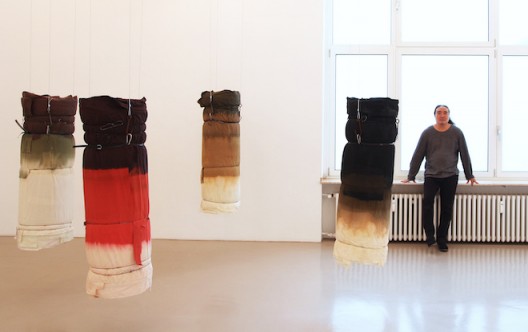
Liu Guangyun questions the intellectual attitude behind this academic appropriation of “typical” (albeit foreign) stylistic traits and the concomitant mediation of aesthetic criteria. He expresses his doubts about the absorption of the classical Western educational canon: “On the one hand, these figures have also influenced my understanding of aesthetics, on the other hand, I question why these classical, Western figures are still a necessary part of modern Chinese art education.” (Liu Guangyun) The Portraits suggest that Liu Guangyun exposes this Chinese appreciation of Western cultural values, that has degenerated into the superficial examination of an ideal type. Liu appears to counteract this customary perception of culturally devalued, “empty” shells with a new aesthetic experience, a revision of cultural values.
In Lius series Original Color the colors are accompanied by a symbolic annihilation of history, and are consequently associated with notions of cultural belonging and identity, or the loss thereof. In a similar way, the symbols of high culture, the epitomes of art history and Western cultural identity, now appear drained and devoid of meaning. The segmentation of the internationally acclaimed sculptures in Portraits indicates a questioning of historical and cultural connection – and the effort to replace the consumption of stereotypes and the entailing loss of meaning with a revaluation of elements shaping national and individual identity.
In the work of Liu Guangyun, the famous manifestations of high culture now come to represent a fundamental alienation from cultural heritage in the media age, becoming symbols of a brittle relationship to tradition. However, just like the discolored fabrics, the dismembered sculptures are imbued by the powerful spirit of freedom embodying the potential of new perspectives, the dynamics of the beginning. Liu experiences this reset with every arrival – in Germany as well as in China.



